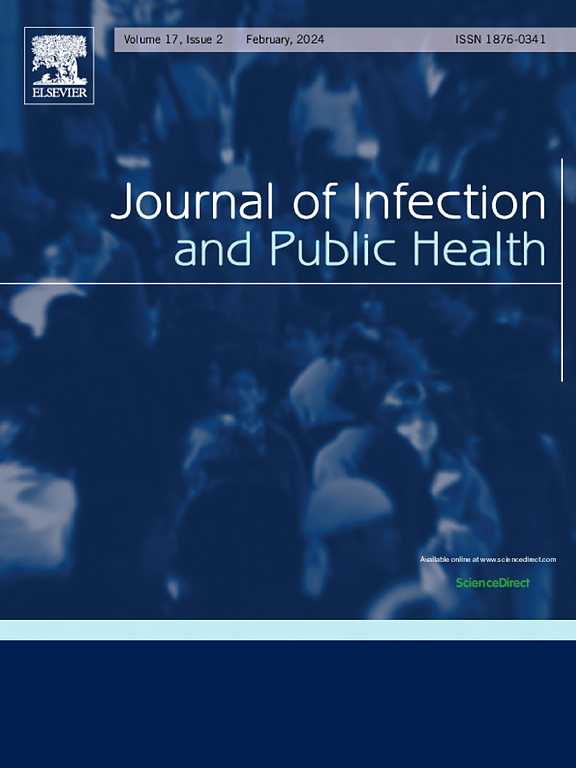Dynamics and diversity of vaginal microbiota in bacterial vaginosis among Thai patients treated with metronidazole
IF 4.7
3区 医学
Q1 INFECTIOUS DISEASES
引用次数: 0
Abstract
Background
Bacterial vaginosis (BV) is a significant global public health issue due to its high recurrence rate and association with various adverse health effects. Understanding the composition and dynamics of the vaginal microbiota (VMB) is essential for better understanding of vaginal health and for developing effective strategies to improve BV management. The study aimed to determine the composition and diversity of the VMB in Thai women with BV before and after metronidazole (MTZ) treatment, and in healthy women.
Methods
Vaginal samples were collected from 20 women with BV (each sampled at three time points: pre-MTZ treatment, post-MTZ treatment and follow-up) and from 20 healthy women (each sampled once). The VMB was analyzed using 16S rRNA gene sequencing via next-generation sequencing on the Ion Torrent PGM platform.
Results
The VMB in Thai women with BV was predominantly composed of Gardnerella, Prevotella and Fannyhessea (formerly Atopobium), while Lactobacillus dominated in healthy controls. Women with BV exhibited greater bacterial diversity and higher prevalence of anaerobic species compared to healthy women. There was higher diversity and abundance in the VMB from pre-MTZ samples, while post-MTZ and follow-up samples displayed lower diversity. In the follow-up stage, the VMB was divided into two subgroups: the larger cured subgroup, which shifted towards a Lactobacillus-dominated composition resembling healthy controls, and the small treatment-failure subgroup, which exhibited a Gardnerella-dominated profile similar to pre-MTZ.
Conclusions
This study provides valuable insights into the structure and dynamics of the VMB in Thai women with BV before and after treatment, offering potential markers for predicting treatment outcomes.
泰国接受甲硝唑治疗的细菌性阴道病患者阴道微生物群的动态和多样性。
背景:细菌性阴道病(BV)因其高复发率和与各种不良健康影响相关而成为一个重要的全球公共卫生问题。了解阴道微生物群(VMB)的组成和动态对于更好地了解阴道健康和制定有效的策略来改善阴道菌群管理至关重要。该研究旨在确定泰国BV妇女在甲硝唑(MTZ)治疗前后和健康妇女中VMB的组成和多样性。方法:采集20例BV女性(分别在mtz治疗前、mtz治疗后和随访三个时间点取样)和20例健康女性(各取样1次)的阴道样本。在Ion Torrent PGM平台上采用下一代测序技术对VMB进行16S rRNA基因测序。结果:泰国BV女性的VMB主要由加德纳菌、普雷沃氏菌和范尼赫菌(原托托菌)组成,而健康对照组以乳杆菌为主。与健康妇女相比,患有细菌性阴道炎的妇女表现出更大的细菌多样性和更高的厌氧物种患病率。mtz前样品的VMB多样性和丰度较高,而mtz后和后续样品的多样性较低。在随访阶段,VMB被分为两个亚组:较大的治愈亚组,转向以乳酸杆菌为主的组成,类似于健康对照;较小的治疗失败亚组,表现出以加德纳菌为主的特征,类似于mtz前。结论:本研究对泰国BV女性治疗前后VMB的结构和动态提供了有价值的见解,为预测治疗结果提供了潜在的标志物。
本文章由计算机程序翻译,如有差异,请以英文原文为准。
求助全文
约1分钟内获得全文
求助全文
来源期刊

Journal of Infection and Public Health
PUBLIC, ENVIRONMENTAL & OCCUPATIONAL HEALTH -INFECTIOUS DISEASES
CiteScore
13.10
自引率
1.50%
发文量
203
审稿时长
96 days
期刊介绍:
The Journal of Infection and Public Health, first official journal of the Saudi Arabian Ministry of National Guard Health Affairs, King Saud Bin Abdulaziz University for Health Sciences and the Saudi Association for Public Health, aims to be the foremost scientific, peer-reviewed journal encompassing infection prevention and control, microbiology, infectious diseases, public health and the application of healthcare epidemiology to the evaluation of health outcomes. The point of view of the journal is that infection and public health are closely intertwined and that advances in one area will have positive consequences on the other.
The journal will be useful to all health professionals who are partners in the management of patients with communicable diseases, keeping them up to date. The journal is proud to have an international and diverse editorial board that will assist and facilitate the publication of articles that reflect a global view on infection control and public health, as well as emphasizing our focus on supporting the needs of public health practitioners.
It is our aim to improve healthcare by reducing risk of infection and related adverse outcomes by critical review, selection, and dissemination of new and relevant information in the field of infection control, public health and infectious diseases in all healthcare settings and the community.
 求助内容:
求助内容: 应助结果提醒方式:
应助结果提醒方式:


